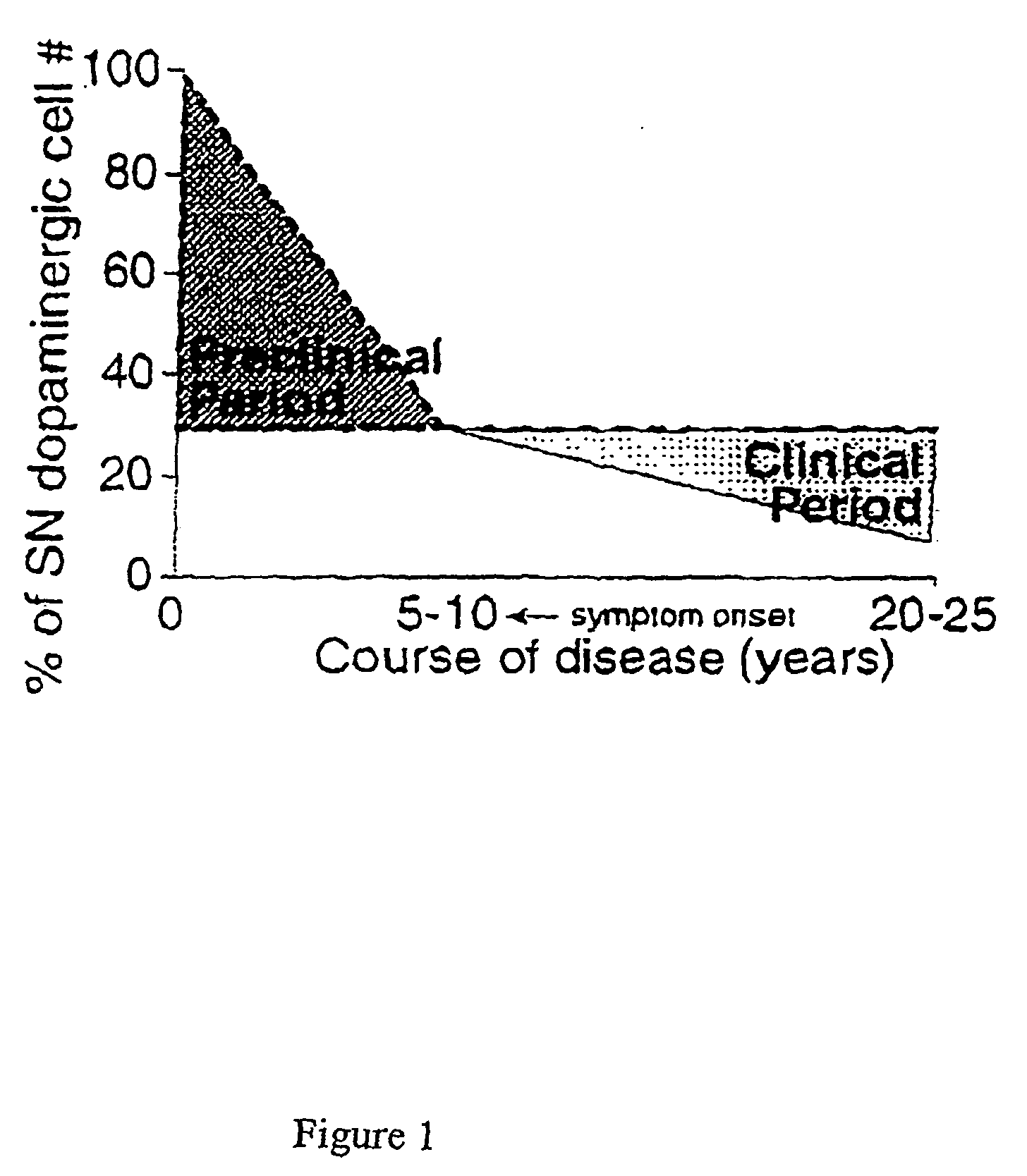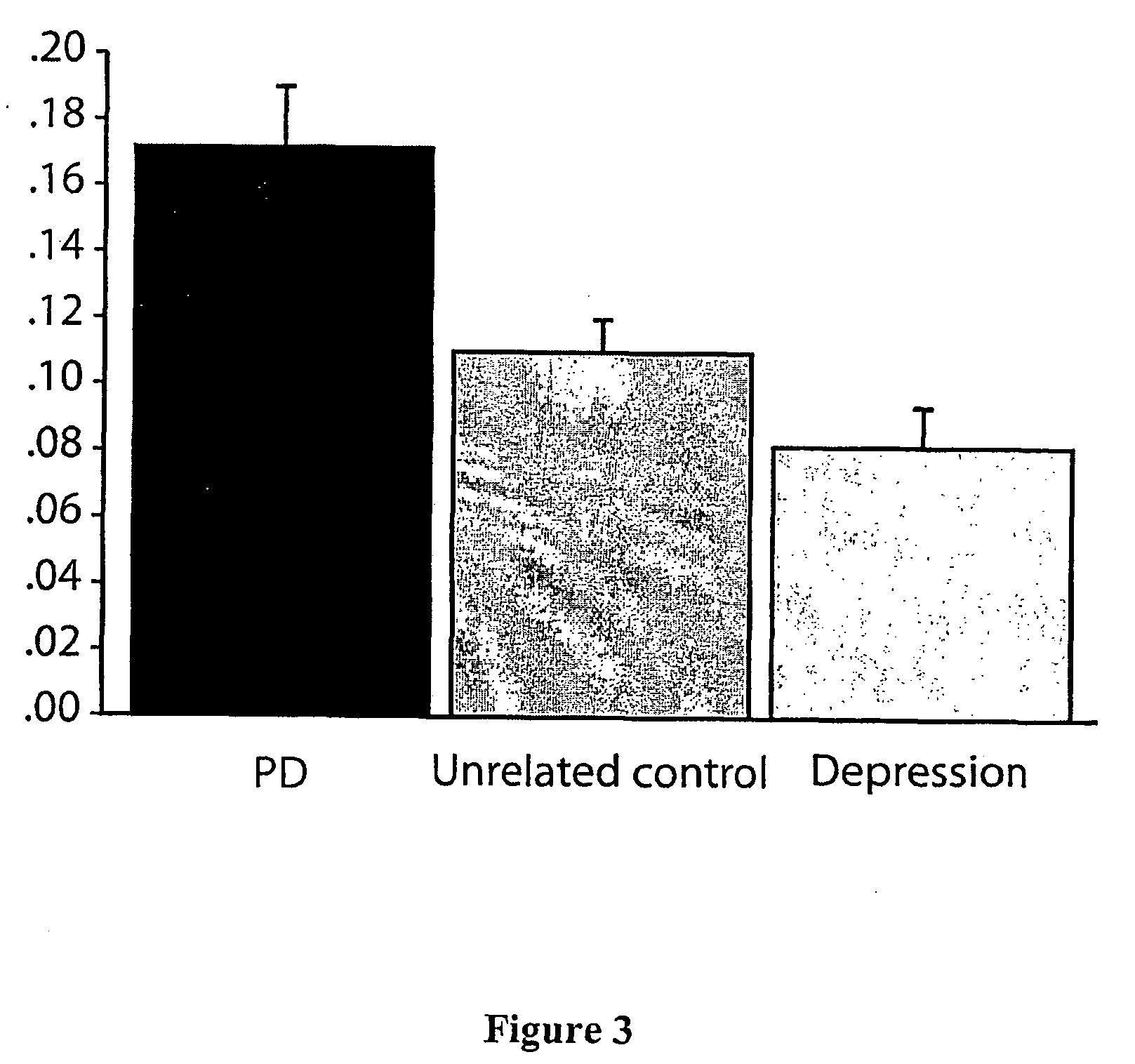Detection of neurodegenerative disorders
a neurodegenerative disease and detection method technology, applied in the field of neurodegenerative diseases or disorders, can solve problems such as cell loss, and achieve the effect of raising the level of the indicator of releas
- Summary
- Abstract
- Description
- Claims
- Application Information
AI Technical Summary
Problems solved by technology
Method used
Image
Examples
example 1
Methods
Subjects
[0101] Fifty-two individuals with a clinical diagnosis of PD and fifty-one healthy controls without any indications of motor dysfunction and seven individuals with a clinical diagnosis of severe depression were recruited, with informed consent, in Sydney, Australia. The depression subjects represented a disease control group suffering a functional, but not degenerative change, in central dopaminergic function. The age range was 43 to 88 years and did not differ between the PD (means age 67.8±1.3), control (mean age 63.6±1.8), or depression subject (mean age 64.5±6.5 p=0.44). A clinical diagnosis of PD was made if the total score obtained from Part III Motor Examination of the Unified Parkinson Disease Rating Scale (Martinez-Martin, et al., 1994) was equal to five or above and the patient was levodopa responsive. No subject exhibited any evidence of related motor disorders or of dementia. A further group of twenty-seven patients with a clinical diagnosis of Parkins...
example 2
Pharmaceutical Formulations
[0115] The therapeutic agent(s) for use in the present invention may be administered alone, although it is preferable that they be administered as a pharmaceutical formulation. The active ingredient may comprise, from 0.001% to 10% by weight, and more typically from 1% to 5% by weight of the formulation, although it may comprise as much as 10% by weight.
[0116] Specific preferred pharmaceutical compositions are outlined below. However, the following are to be construed as merely illustrative examples of formulations and not as a limitation of the scope of the present invention in any way.
Example 2(a)
Composition for Inhalation Administration
[0117] For an aerosol container with a capacity of 20-30 ml: a mixture of 10 mg of zonisamide with 0.5-0.8% by weight of a lubricating agent, such as polysorbate 85 or oleic acid, is dispersed in a propellant, such as freon, and put into an appropriate aerosol container for either intranasal or oral inhalation admini...
example 2 (
Example 2(d)
Injectable Parenteral Composition
[0121] A pharmaceutical composition of this invention in a form suitable for administration by injection may be prepared by mixing 1% by weight of zonisamide in 10% by volume propylene glycol and water. The solution is sterilised by filtration.
PUM
| Property | Measurement | Unit |
|---|---|---|
| pH | aaaaa | aaaaa |
| concentration | aaaaa | aaaaa |
| weight | aaaaa | aaaaa |
Abstract
Description
Claims
Application Information
 Login to View More
Login to View More - R&D
- Intellectual Property
- Life Sciences
- Materials
- Tech Scout
- Unparalleled Data Quality
- Higher Quality Content
- 60% Fewer Hallucinations
Browse by: Latest US Patents, China's latest patents, Technical Efficacy Thesaurus, Application Domain, Technology Topic, Popular Technical Reports.
© 2025 PatSnap. All rights reserved.Legal|Privacy policy|Modern Slavery Act Transparency Statement|Sitemap|About US| Contact US: help@patsnap.com



